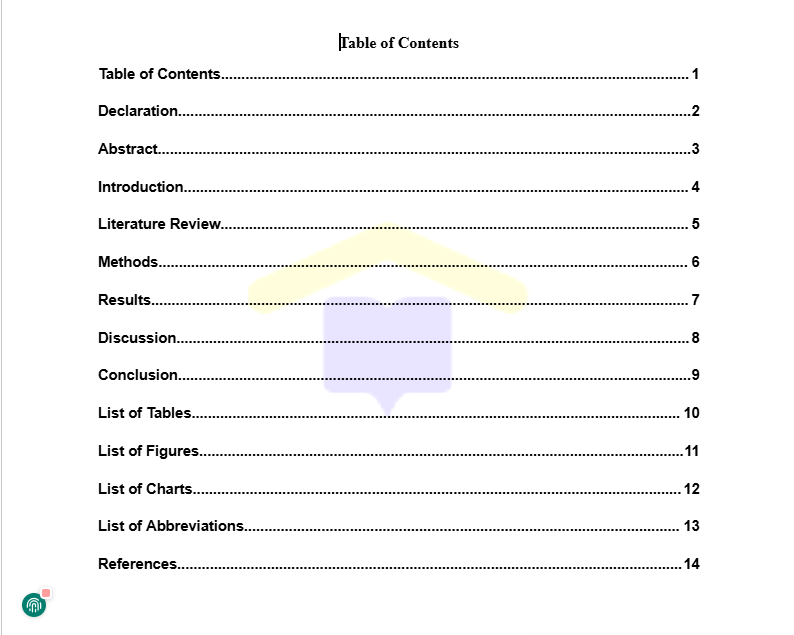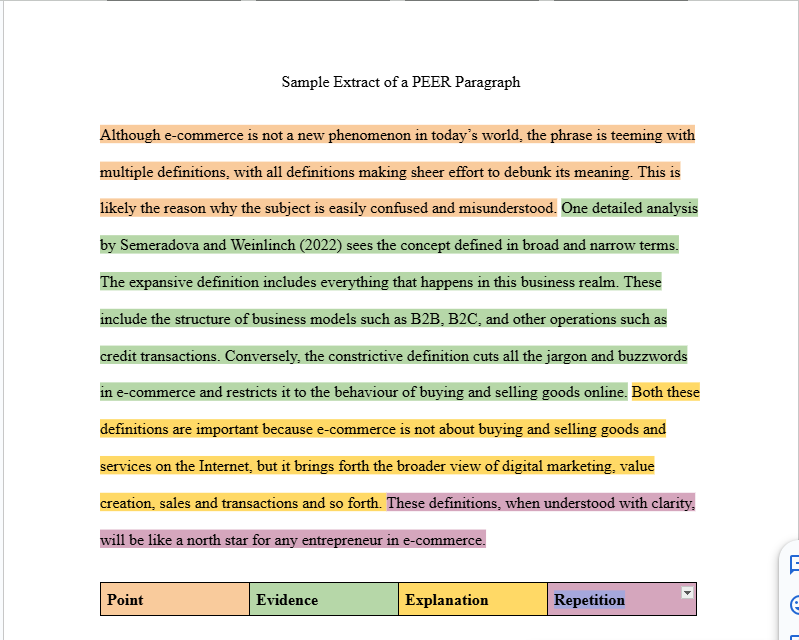How To Write A Literature Review For A Dissertation FAST!
By: Stephen Imbira | April 1st 2025
A well-structured literature review is important to earn good grades in your dissertation. It shows that you understand your topic on many levels.
Yet many students struggle with this chapter.
At Part-time Study Help, I have worked with the dissertations of several students. The number one chapter they struggle with most is the literature review. Many students come to me with:
If these questions sound familiar, you’re not alone. You are also not alone in trying to SPEED UP this chapter and get it DONE.
That's why today I will give you the supplies and tools to make you write this chapter fast. I will also provide AI prompts that will give you momentum while writing. These prompts will eliminate the two deadly sins of writing a literature review: procrastination and analysis paralysis.
Imagine that classic movie scene where the main character hits a lightbulb moment. Suddenly, they are working day and night, surrounded by a stack of books. They are diving into existing knowledge, furiously scribbling notes and joyfully connecting dots all at once. And don't forget the thrilling background music.
That's exactly what you're doing in a literature review.
Not acting. You are uncovering previous insights to build the foundations of your study. The light bulb idea is your study. The stack of books is the journal articles.
Therefore, a literature review examines scholarly articles on your topic. Thereafter, you identify relevant theories, methods and gaps to use in your dissertation.
It is the second chapter of your dissertation.

I once succumbed to unethical issues with AI but I surprisingly evaded detection. It was during my final year. It was a narrow escape because AI was still fresh and new. The deadline was due, so I generated my method section with AI, and I passed.
But this cannot happen now, as universities have developed AI checkers.
But even with AI checkers, submissions of generative AI content have surged. The Artificial Intelligence Index Report 2023 by Stanford confirms this growth.
But how do you use AI ethically?
Think of AI as a train. The furthest it can take you is to a station near your dissertation. You will have to do the final stretch yourself.
Therefore, AI can streamline the writing process, but your final work has to come from you.
There are six areas in which AI is useful in your writing. These are:
This stage is super important. It is not only the foundation of your literature but of your entire paper. It is also the root problem of why you're struggling to begin with your literature review.
At Part-time Study Help, most students who come to us lack clarity on their topic. When we help them with their research question, they feel they can start.
If stuck, AI can help you generate a research question in seconds. Here is an example of a prompt to help you with idea generation:
Can you help me find a research question on e-commerce and new entrepreneurs?
AI will generate several research questions to jumpstart your brain with ideas. You can pick one to use or further customize it to your topic.
The structure of a literature review is not different from any academic paper. The rules are still the same.
There is an introduction, a body, and a conclusion.

Then, consider how you will structure your literature review. This can be chronological, methodological, or thematic.
A chronological literature review organizes your research findings in the order they were published. It starts from the earliest research to the most recent findings.
A thematic literature review organizes your literature around different themes. These themes are concepts or everything related to your research questions.
A methodological literature review assesses the strengths and weaknesses of various methods.
With a research question at hand, ChatGPT can also give you a quick structure for the chapter.
Here is an example of a ChatGPT prompt for a chronological literature review:
Generate a structured literature review outline for my research question: [Insert Your Research Question]. The outline should logically progress from foundational research to recent advancements, highlighting gaps and contributions. Structure the outline as follows:
- Seminal works: Identify seminal works relevant to [your topic] and explain their role. Specify if they should be mentioned.
- Progress: What progress has been made since these seminal works?
- Key Themes: Identify the most relevant themes in existing literature and determine the best order for presenting them.
- Achievements and Limitations: Analyze the major contributions and shortcomings of recent works.
- Research Gaps: Highlight the gaps revealed by these limitations.
- My Contribution: Explain how my study addresses these gaps and advances knowledge in the field.
This will set you on to advance the chapter. But again, you can customize the output as you like.
Remember when we said, "ChatGPT can only take you to the furthest station?"
This is where the analogy applies.
Many students instruct ChatGPT to write the chapter based on the outline.
Don't take this route – THE LAZY ROUTE. It spells disaster.
The literature review requires deliberate study of scholarly sources related to your topic. Jump into academic databases and start conducting the literature review.
This includes searching, evaluating, studying, and writing notes.
When writing notes, place them in different themes of your structure. You will paraphrase later to avoid plagiarism.
How do you know when you are done? When you keep running into the same journal articles. You have likely exhausted your current research. You can alter your search terms. If you are using a thematic literature review, you can move to another theme.
Also, this can be the tipping point for conducting a literature review. It is now time to start writing.
You have already conducted your literature review. You have the notes. It's time to WRITE.
The best way is to write section after section, and paragraph after paragraph. Do this to avoid PLAGIARISM from DAY ONE.
While writing paragraphs, you can use the PEER system. Prof. Stuckler proposed this system. This format will give your writing academic rigour.

Of course, you can use AI to automate and speed up your writing process. Here is a template you can use to write the paragraphs:
Here is an example of ChatGPT helping me write a paragraph on the e-commerce and job creation theme.
Write a PEER-based paragraph on the theme 'e-commerce and job creation' using the evidence below. The paragraph should be written in simple, clear language to be easily paraphrased. Structure it using the following template:
- 🔹 Point: (Introduce the key idea. Keep it broad and impactful.)
👉 What is the general concept being discussed?
👉 Why is this important in the context of the research?- 🔹 Evidence: (Provide data or findings from the literature in clear, simple language.)
👉 Findings from studies (insert your extracted evidence from Google Scholar)
👉 How was the data collected? (quantitative, qualitative, case study, etc.)
👉 How does this study support or challenge previous research?- 🔹 Explanation: (Explain why the findings matter and connect them to the bigger context.)
👉 What do these findings reveal about the theme?
👉 How do they apply to real-world e-commerce businesses?
👉 What practical lessons can be learned?- 🔹 Repetition: (Reinforce the main idea in a fresh way.)
👉 How does this section contribute to the overall research topic?
👉 Why should e-commerce entrepreneurs care about this information?Evidence - support from literature
Biagi, F., & Falk, M. (2017). The impact of ICT and e-commerce on employment in Europe. Journal of Policy Modeling, 39(1), 1-18.This study presents new empirical evidence regarding the impact of ICT/e-commerce activities on labour demand. The data is based on new and unique data for 10 European countries for the period 2002–2010. A key feature of the empirical analysis is the use of several types of advanced ICT activities, such as enterprise resource planning (ERP) systems, mobile internet access, and e-commerce practices. The main result of the study is that the increase in ICT/e-commerce activities over time has not led to a decline in jobs. This holds true for both manufacturing and service industries, as well as for SMEs and large firms. For ERP systems and websites, there is some evidence of positive effects. These findings do not support the hypothesis that ICT utilization is leading to labour substitution overall. In fact, ICT activities appear to be rather neutral to employment. The results are robust not only to the model specification but also to the estimation method applied.
Although it is your first draft, paraphrase everything in your own words. Your first draft should be plagiarism-free.
And will have no AI content.
This will make the next step easy, which is editing.
There are two approaches:
Writing a literature review is pretty easy if broken down into simple steps. Use these steps to speed through your literature and defeat procrastination at every level.